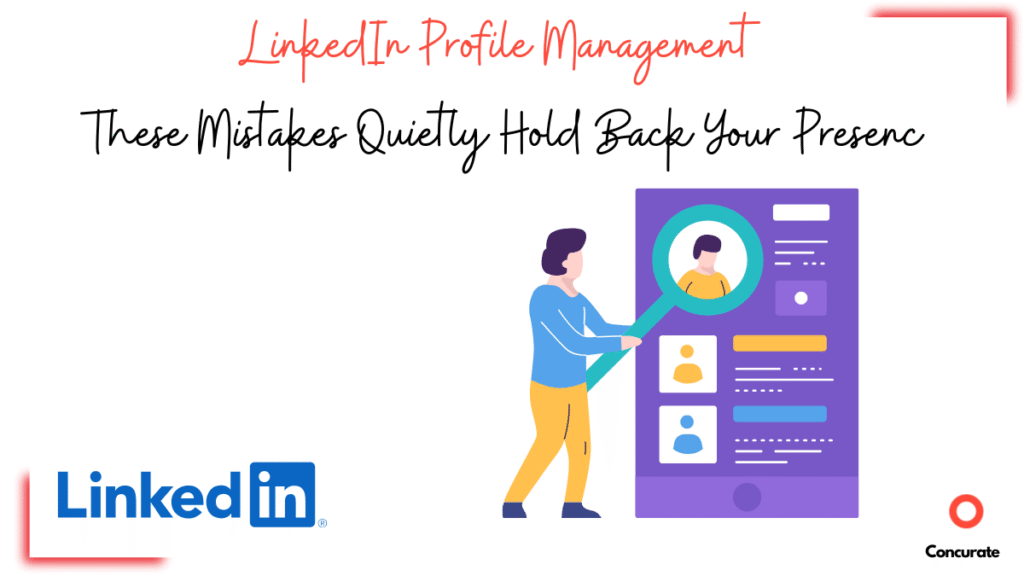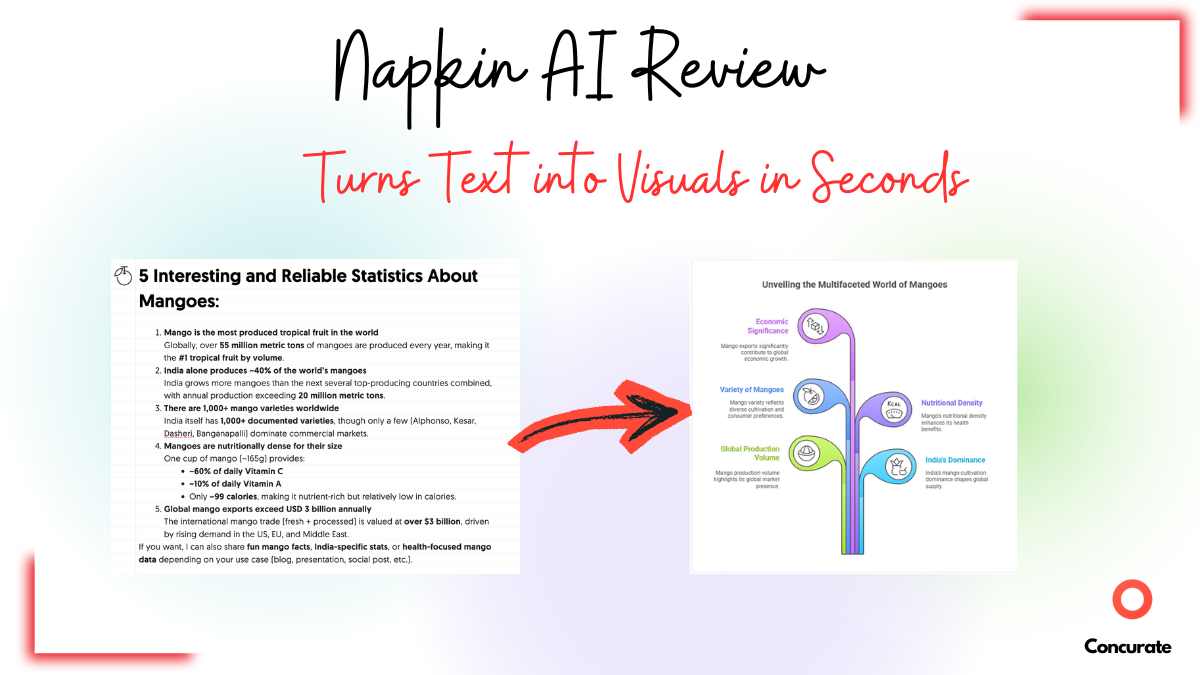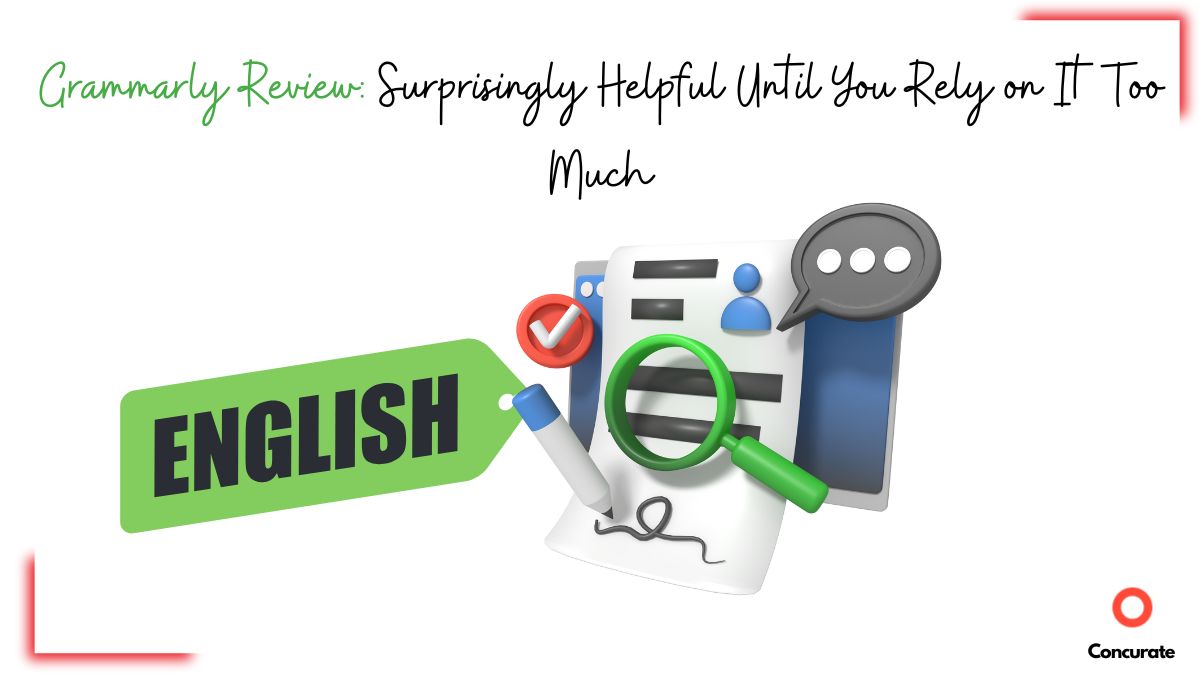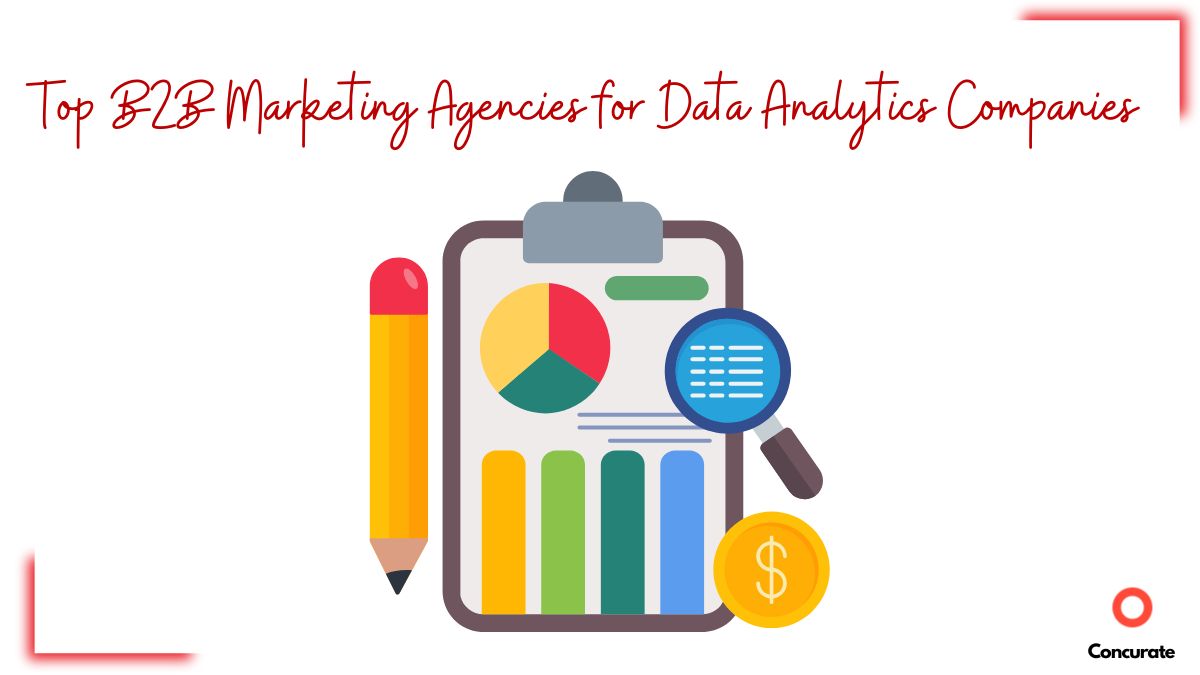| TL;DR: Most professionals treat LinkedIn like a feed, not a framework. This piece breaks down four quiet mistakes that limit visibility and shows how to turn your profile into a consistent brand signal. |
As a B2B leader, you are doing everything the platform experts recommend. You write consistently, share perspectives on industry trends, even document lessons from work.
Yet the results rarely match the effort. The right audience doesn’t respond. The profile looks active, but opportunities stay still.
This gap isn’t about creativity. It’s about clarity. Most professionals treat LinkedIn like a collection of moving parts when it’s actually a connected system. When those parts don’t move together, visibility fails to turn into credibility.
This article unpacks six mistakes that quietly break that coherence. We will also look at strategies that can turn LinkedIn from a routine platform into a long-term advantage for your brand.
Mistake 1: Treating the Profile Like a Résumé, Not a Reputation Tool
Many professionals build their LinkedIn profile the same way they built their CV. They list roles, education, and achievements, thinking that’s enough to show credibility.
On the surface, it looks complete. It looks professional, yet it rarely communicates who they are beyond the basics.
A LinkedIn profile is more than a digital summary. It’s the first layer of your personal brand. It’s where people decide whether you’re worth following, learning from, or doing business with.
When your profile reads like a résumé, it informs. When it’s positioned with intent, it influences. Here’s how to make that happen.
Make your headline talk about you
Your headline travels everywhere, in comments, searches, and connection invites. Most people waste it on a job title.
Think of it as your positioning line, not your designation. Write it for the people you want to reach, not the HR teams you left behind. For instance, “Helping B2B leaders turn data into direction” tells a story. “Marketing Head at X” doesn’t.

Source – LinkedIn/ Nitesh Gupta
Add one keyword your audience would actually search for. Not for SEO, but for discoverability. It helps the right people find you faster.
Write your About section like a story, not an autobiography
Think of this section as your story, not a summary of your past. The goal isn’t to sound impressive but intentional. Use the first few lines to hook attention.
That is, what drives your work, what you care about, what you’re exploring. Then connect it to what you help others achieve. Neil Patel’s LinkedIn profile does a stellar job here.
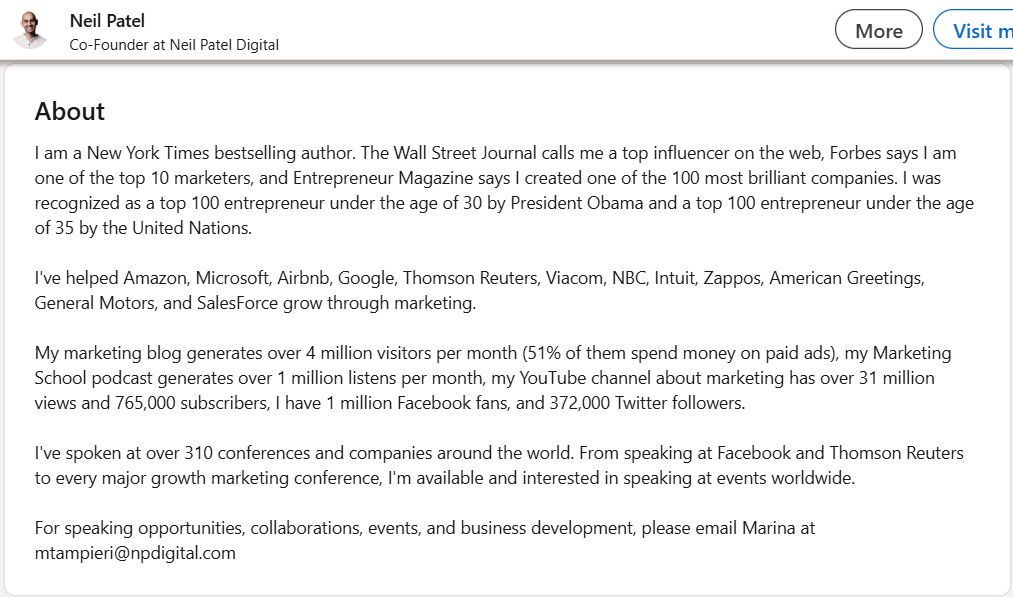
Source – LinkedIn/Neil Patel
Word of advice: Drop the jargon. Write like you speak. The goal isn’t to sound perfect. It’s to sound real enough that someone would want to talk to you.
Show your career map through experience
Your Experience section should show growth, not chronology. Instead of listing job descriptions, tell micro-stories: what challenges you faced, how you solved them, what changed because of your work.
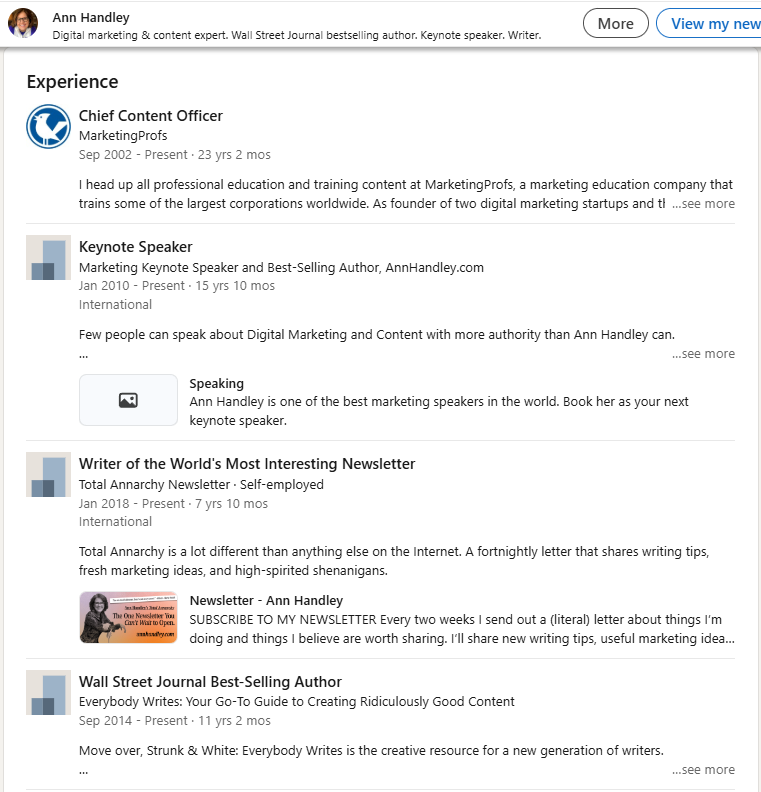
Source – Linkedin/ Ann Handley
Treat each role as a chapter, not a bullet list. Numbers are good, but context is better. When someone reads through your experience, they should see evolution, not repetition.
Use your banner and visuals to set the tone before words do
The banner is the first thing people see and the most underused part of most profiles. A clean design with a brand statement, tagline, or visual cue says more than stock imagery ever could.
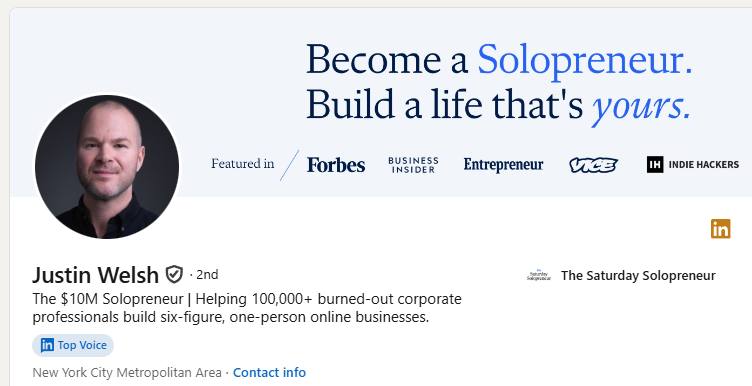
Source – LinkedIn/Justin Welsh
Ask yourself: if someone saw only your banner, would they get what you do? Use it to create context before they even read your headline.
Curate your Featured section like a portfolio of thought
This section is where credibility meets proof. Add articles, interviews, or even thoughtful posts that show how you think. Add pieces that show consistency in your ideas. If you’ve been featured somewhere, highlight it. If not, start with one strong post that represents your voice.
Less is more here. One great piece that reflects your perspective beats ten forgettable ones. Over time, this becomes a portfolio of trust: a space where people see your ideas, not just your title.
When each of these parts aligns, your profile stops introducing your past and starts signalling your authority.
Mistake 2: Posting Without a Point of View
Many professionals show up on LinkedIn often, but not with intent. They post regularly, sharing quotes, reposting news, or talking about anything that feels relevant in the moment.
The activity looks impressive, but the impact stays flat.
Every post you share shapes perception. When your topics shift wildly, a startup story one day, a motivational quote the next, an industry update the third, people stop knowing what to associate you with. The problem isn’t inconsistency in effort. It’s inconsistency in messaging.
If you want your audience to remember you, they need to know what you stand for.
Start by defining your lane
Ask yourself what you want to be known for: the domain, theme, or idea that connects all your work. It could be cybersecurity, innovation in logistics, or the human side of tech leadership. Whatever it is, every post should loop back to that core.
Justin Welsh is a great example. Every post he shares, from audience building to solopreneur systems, circles back to one idea, which is building leverage through simplicity. Authority compounds when people see patterns in your perspective.
Shape your content around your goals
If your goal is to build thought leadership, share insights, stories, and reflections that reveal how you think, not just what you know. If your goal is business development, talk about the problems your clients face and the lessons you have learned solving them.
Dave Gerhardt does this exceptionally well. Whether he talks about copywriting, positioning, or personal lessons, everything ties back to his domain of B2B marketing. His posts don’t compete with each other for attention.
They build a cohesive narrative about his expertise.
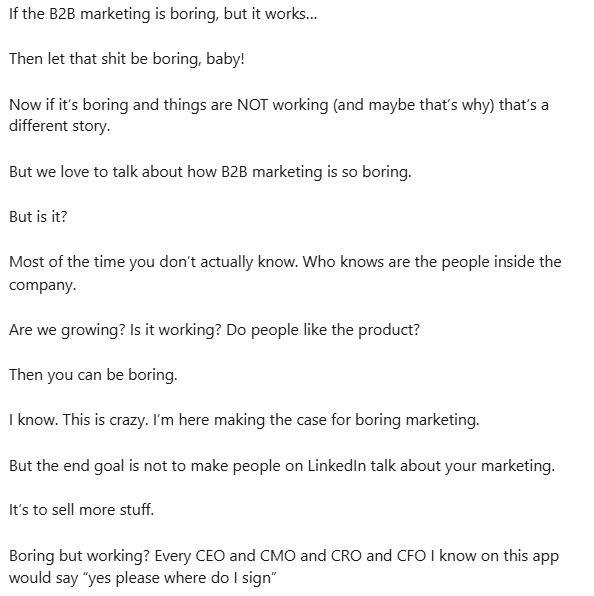
Source – Linkedin/ Dave Gerhardt
Stay consistent, not repetitive
Consistency doesn’t mean saying the same thing. It means speaking from the same worldview. You can talk about trends, challenges, or personal experiences as long as they point toward the same strategic message.
Random content might get views. Focused content builds recall.
Rand Fishkin, for instance, stays rooted in ethical, data-driven marketing. He talks about analytics, audience research, and brand storytelling, but always through the same lens of transparency and trust.
The tone, topics, and visuals align, creating a brand people instantly recognize.
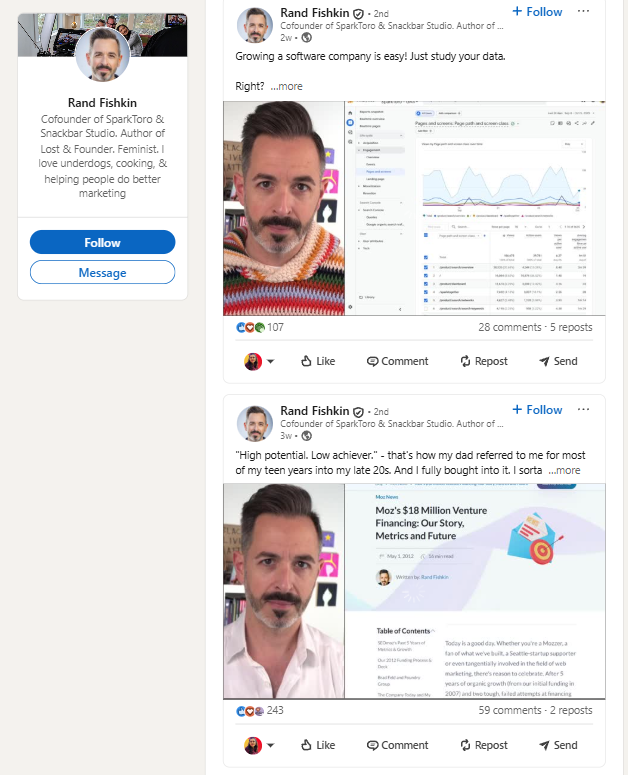
Source – Linkedin/ Rand Fishkin
When your posts align with a clear point of view, your voice becomes recognizable not because you post often, but because everything you share reinforces what you stand for.
When your posts align with a clear point of view, your voice becomes recognizable not because you post often, but because everything you share reinforces what you stand for.
Mistake 3: Writing for Algorithms, Forgetting the Audience
Somewhere between trying to sound smart and trying to sound human, most professionals end up sounding the same.
They learn the rules of reach, such as catchy hooks, short sentences, just enough white space, and follow them so well that their own voice disappears.
The post performs, but the person behind it doesn’t stand out.
On the other end are those who go all in on authenticity. They share travel memories, morning reflections, and family lessons with no thread connecting them back to their work. It feels honest, but it doesn’t build a narrative.
Both extremes miss the point. The goal isn’t to please the algorithm or pour your heart out. It’s to write in a way that people remember why your voice matters.
Write for clarity, not clicks
You don’t need to chase what performs. You need to say what resonates.
Algorithms change. Human curiosity doesn’t.
Ali Abdaal is a great example of this. His content on productivity and learning works not because it’s engineered for engagement. But because it’s written to help clearly, consistently, and in his own tone.
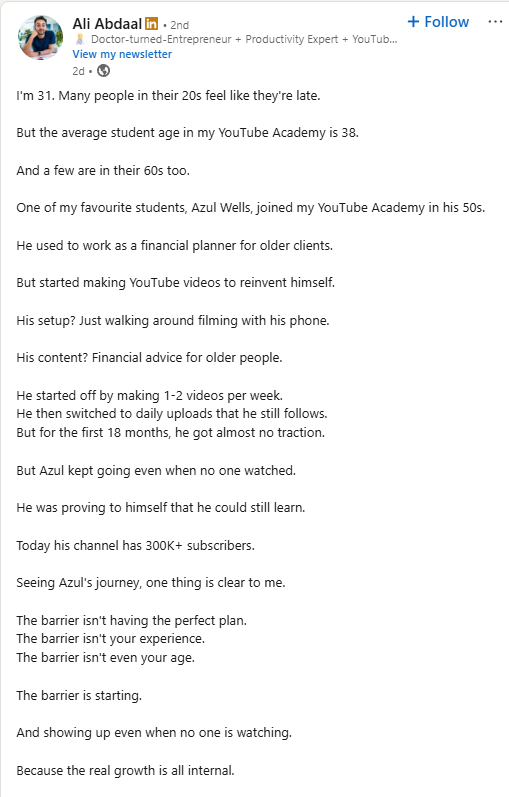
Source – Linkedin/ Ali Abdaal
Make personal stories do professional work
Personal stories are powerful, but only when they serve a point. A lesson from parenting can reveal empathy in leadership. A travel anecdote can explain persistence.
The key is to make your life the context, not the content. Ann Handley does this masterfully. Her posts feel human, but every one of them circles back to writing and creativity, the space where her expertise lives.
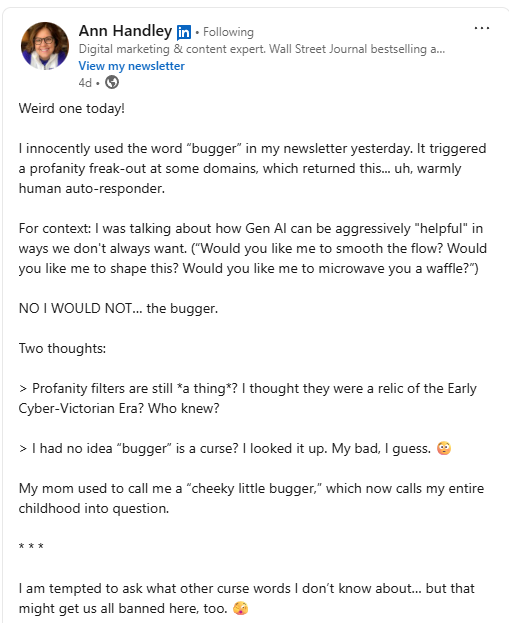
Source – Ann’s LinkedIn
Keep your tone close to conversation
Your voice is your signature. The more you imitate trending formats, the harder it becomes for people to recognise it. Don’t try to sound like a writer. Try to sound like yourself on your best day: calm, sharp, and deliberate.
Over time, that tone becomes your recall.
When you write for understanding instead of attention, your words start working harder than any algorithm ever could.And that brings us to the last but an crucial mistake most people make.
Mistake 4: Engaging Without Intent
Most professionals end up treating engagement like a checklist.
- Comment on ten posts a day.
- Reply fast.
- Stay visible.
But presence alone doesn’t build perception. Intent does.
A comment is not a formality. But a reflection of how you think.
When you write “Well said” or “Totally agree,” it shows up in the feed, but it doesn’t say anything about you.
Visibility without thought is just noise.
Engage to add, not to appear
Engagement works when it adds value, not volume. Before you comment, ask yourself: does this thought take the conversation forward, or does it just exist to be seen?
People who bring clarity, a counterpoint, or a lived example stand out far more than those who show up everywhere.
Reply with presence, not protocol
When people comment on your post, they are inviting a conversation, not an acknowledgment. Reply like you would in a meeting, build on their thought, ask a question, or add an example.
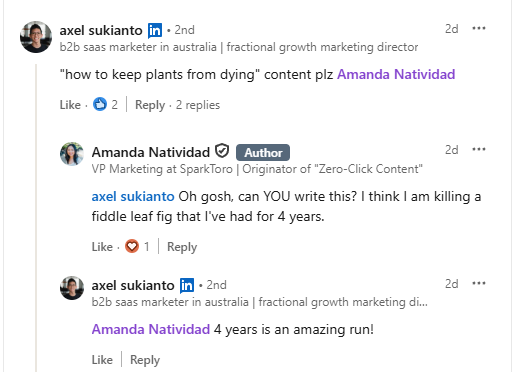
Source – Amanda’s LinkedIn
That depth turns your comment section into a space people want to revisit, not scroll past.
Use messages to connect, not to chase
Direct messages are not the place to sell. They are the place to understand. Instead of a pitch, start with context. It could be a shared post, a relevant idea, or a mutual connection.
The best relationships on LinkedIn begin with curiosity, not conversion.
Bring your team into the conversation
When your team engages with your content, they extend your voice. Help them understand your key themes, tone, and audience.
That shared direction ensures that every like, comment, or repost strengthens your brand instead of scattering it.
At the end of the day, engagement is not about activity. It’s about alignment.
When every interaction reflects who you are and what you stand for, LinkedIn stops being a platform and starts becoming an ecosystem for trust.
A Simple Pulse Check for Smarter LinkedIn Profile Management
You’ve read the strategies, reflected on the mistakes, and maybe even spotted a few patterns in your own profile. But before you move on, take a moment to pause.
Good LinkedIn profile management isn’t about reinvention. It’s about awareness: knowing what’s working, what’s missing, and what could be tightened.
Here’s a short pulse check to help you spot those gaps in your LinkedIn profile right now.
- Does your banner make your work immediately clear to a first-time visitor?
- Does your headline describe who you help or what you solve, not just your role?
- Does your About section feel human enough to hold attention beyond the first line?
- Do your featured posts show your perspective, not just your portfolio?
- Does your experience tell a clear story of growth, not just a list of titles?
- Are your skills updated to reflect the kind of work you want to be known for?
- Are you commenting in spaces where your ideal audience actually engages?
- Does your network add new voices, not just familiar ones?
- And if someone lands on your profile right now, can they understand what you stand for in ten seconds or less?
If you want to do it later, we’ve turned this pulse check into a simple downloadable checklist, something you can keep handy and revisit every quarter. You can download it here.
How Concurate Can Help Take Your LinkedIn to the Next Level
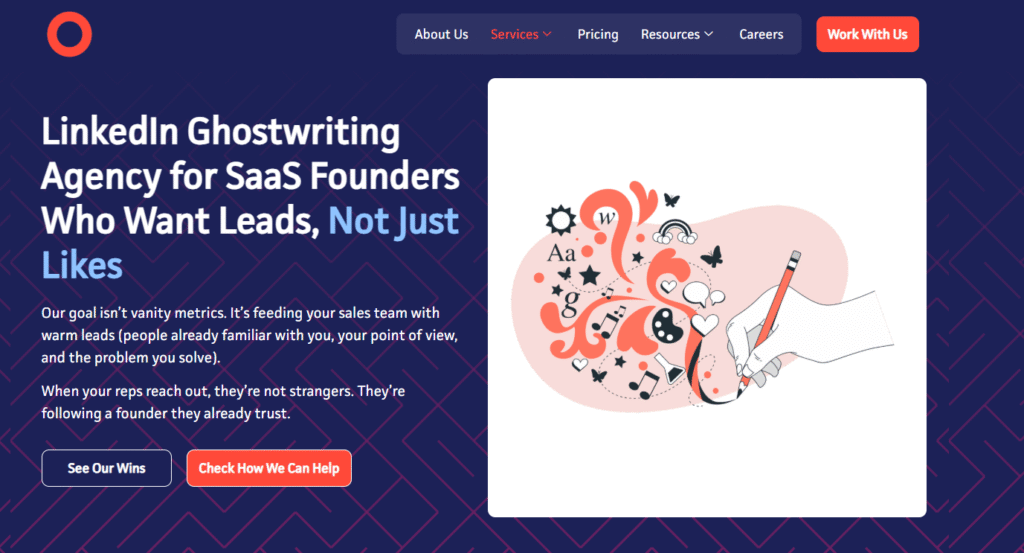
If you’ve come this far, you already understand what great LinkedIn profile management looks like. It’s not just about posting often or looking polished. It’s about building a profile that reflects your ideas, your intent, and your authority.
But for most leaders, that level of consistency takes time. Between meetings, client calls, and team reviews, the creative work of writing, planning, and engaging often slips through the cracks. That’s where we step in.
At Concurate, we help founders, CXOs, and business leaders turn their LinkedIn presence into a strategic asset. From profile positioning and content planning to ghostwriting and audience engagement, we manage every piece with care, so your profile doesn’t just look active, it feels alive.
Our goal is simple: to help you show up on LinkedIn in a way that attracts the right audience, builds trust, and opens real conversations.
If you’re ready to take your LinkedIn presence to the next level, let’s connect. We will make your profile work as hard as you do.


